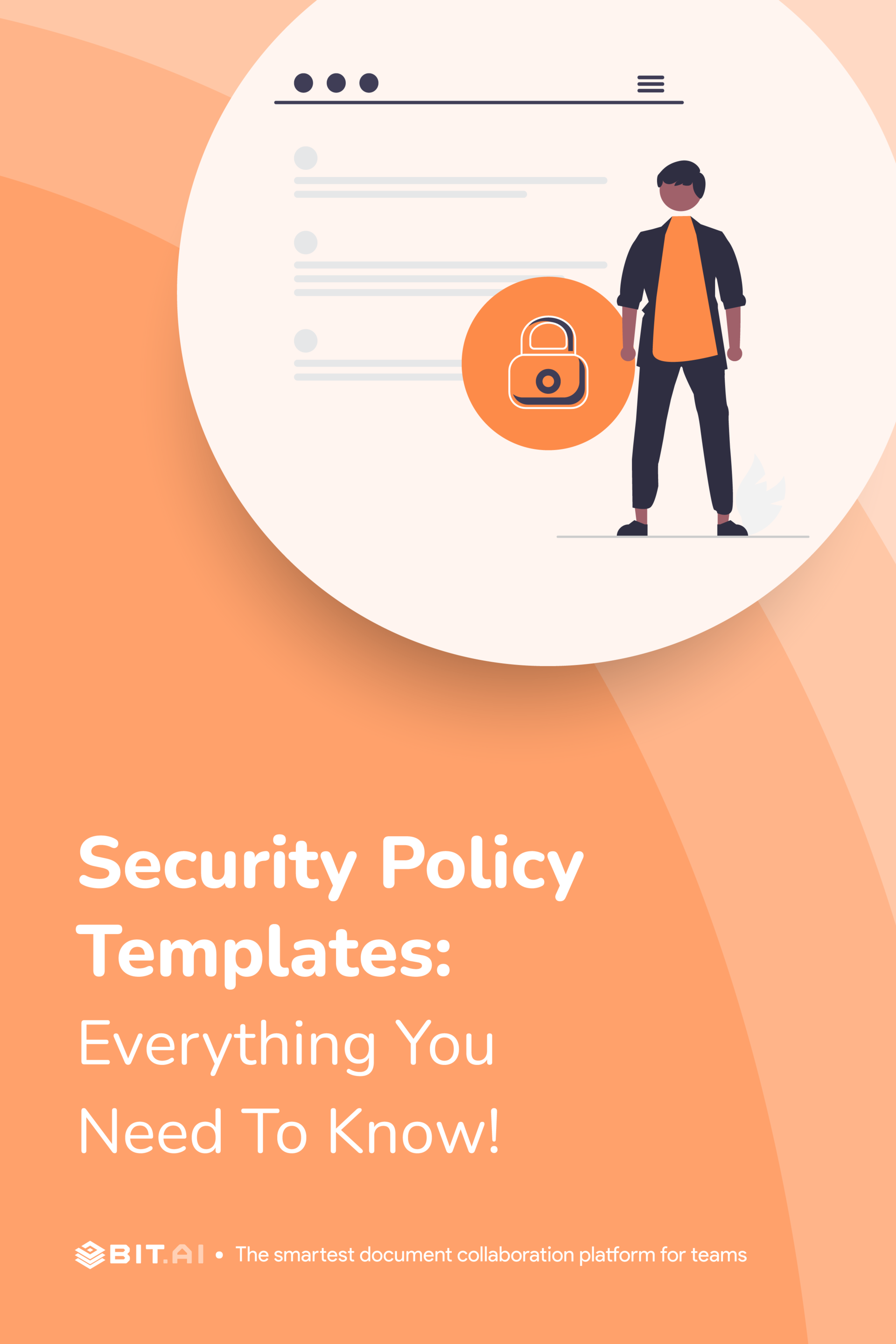Imagine a quiet summer day where people go about their lives unaware of an impending storm. Suddenly, news breaks of a colossal data breach, and chaos ensues. This was the Equifax incident—the cybersecurity storm that shook the world.
In 2017, Equifax, a major credit reporting agency, fell victim to a breach that exposed the personal information of approximately 147 million people. Social security numbers, birth dates, and other sensitive data were snatched by cybercriminals, leaving countless lives vulnerable to identity theft and financial fraud.
This incident shattered people’s trust and triggered a wave of regulatory scrutiny and legal repercussions. In the world of security policy, Equifax is a stark reminder of the risks we face. Organizations and individuals must implement robust policies to protect sensitive information, maintain trust, and create a safer digital landscape.
In this blog, we will delve into the world of security policy, exploring its importance, key components, and best practices. Join us as we discuss how organizations can protect valuable data, mitigate risks, and establish a security culture.
What is a Security Policy?
A security policy is a set of rules and guidelines that organizations put in place to protect their digital and physical assets. It’s like a blueprint that helps ensure the safety and confidentiality of information, systems, and resources.
The main goal of a security policy is to define the dos and don’ts when it comes to security measures. It outlines the acceptable behaviours and practices employees and users should follow to maintain a secure environment. For example, it may include rules about password strength, data encryption, and access control.
Furthermore, security policies are not static documents but are continuously updated to address emerging threats, technological advancements, and changes in regulatory requirements. Regular reviews and updates ensure the policies remain relevant and effective in mitigating risks. A good security policy helps organizations keep their important things safe and ensures people can trust them.
Why is a Security Policy Important?
A security policy is crucial for organizations to establish a comprehensive framework that safeguards their assets, information, and operations.
1. Protection against cyber attacks
 In today’s digital landscape, cyber-attacks are rampant. A well-defined security policy helps defend against unauthorized access, data breaches, and other malicious activities. According to the Verizon Data Breach Investigations Report 2021, 85% of data breaches involve human error or social engineering. Security policies help address these vulnerabilities and reduce the likelihood of successful attacks.
In today’s digital landscape, cyber-attacks are rampant. A well-defined security policy helps defend against unauthorized access, data breaches, and other malicious activities. According to the Verizon Data Breach Investigations Report 2021, 85% of data breaches involve human error or social engineering. Security policies help address these vulnerabilities and reduce the likelihood of successful attacks.
2. Regulatory compliance
Many industries are subject to strict data protection regulations. Security policies ensure organizations adhere to legal requirements and industry standards. For instance, the General Data Protection Regulation (GDPR) imposes significant penalties for non-compliance, with fines reaching up to €20 million or 4% of annual global turnover, whichever is higher.
3. Mitigation of insider threats
Insider threats, whether intentional or accidental, pose a significant risk. A comprehensive security policy includes measures to manage access controls, monitor privileged accounts, and educate employees about their responsibilities. According to the 2020 Cost of Insider Threats Global Report by Ponemon Institute, the average annual cost of insider threats for organizations surveyed was $11.45 million.
4. Maintaining customer trust
Security incidents can severely impact an organization’s reputation and erode customer trust. Implementing effective security policies demonstrates a commitment to protecting customer data and enhances trust. In a global survey conducted by RSA, 70% of respondents said they would stop doing business with a company that experienced a data breach.
5. Safeguarding intellectual property
Security policies help protect valuable intellectual property, trade secrets, and proprietary information. Organizations can mitigate the risk of intellectual property theft by implementing measures such as access controls, encryption, and data classification.
What is the Purpose of Security Policy?
The purpose of a security policy is to provide a clear and relevant framework that defines an organization’s approach to protecting its assets, mitigating risks, and ensuring information security. It serves as a guiding document outlining the objectives, principles, and responsibilities of security practices.
A well-designed security policy establishes the rules and procedures for access control, data protection, incident response, and compliance. It helps create a cohesive security culture within the organization by setting expectations and promoting employee awareness.
Moreover, a security policy is a communication tool that demonstrates the organization’s commitment to safeguarding sensitive information to clients, partners, and stakeholders. It helps build trust and confidence in the organization’s ability to maintain a secure environment.
By providing a strategic and operational framework, a security policy aids in decision-making processes, ensures consistency in security practices, and helps the organization stay ahead of emerging threats.
What Are The Types of Security Policies?
Security policies are critical in protecting sensitive information and mitigating risks in today’s interconnected digital landscape. In this section, we will explore three key types of security policies: Program Policies, Issue-Specific Policies, and System-Specific Policies.
1. Program Policy
 This policy forms the backbone of an organization’s security approach. It establishes the overall direction and principles for security management. It outlines the organization’s security objectives, defines roles and responsibilities, and creates a framework for implementing security controls and managing risks across the entire organization.
This policy forms the backbone of an organization’s security approach. It establishes the overall direction and principles for security management. It outlines the organization’s security objectives, defines roles and responsibilities, and creates a framework for implementing security controls and managing risks across the entire organization.
2. Issue-Specific Policy
These policies focus on specific security concerns or areas within the organization. They provide clear guidelines and procedures for addressing particular security issues. Examples include policies for data protection, acceptable use of technology and systems, social media usage, or incident response. These policies address specific risks and provide detailed instructions for mitigating them effectively.
3. System-Specific Policy
These policies are tailored to individual IT systems like networks, servers, or applications. They outline the unique security requirements and configurations for each system. System-specific policies cover aspects like access controls, authentication mechanisms, encryption protocols, and other technical safeguards specific to the system’s needs. These policies ensure that each system is adequately protected according to its unique security requirements.
Key Elements of an Effective Security Policy
A robust security policy is a critical pillar of an organization’s information security program. To ensure its effectiveness, it should encompass the following key elements:
- Clearly Defined Purpose and Objectives: A security policy must explicitly articulate its purpose and objectives. This helps all stakeholders understand the importance of safeguarding information assets and mitigating risks.
- Applicability and Scope: Defining the scope of the security policy is vital to specify who it applies to within the organization. It can be based on departments, roles, or relevant criteria ensuring comprehensive coverage.
- Strong Leadership Support: For a security policy to be successful, it requires visible support and commitment from senior management. Their endorsement sets the tone for a security-conscious culture and ensures policy adherence throughout the organization.
- Practical and Enforceable Guidelines: The policy should balance providing comprehensive security measures and practicality. It should be enforceable, avoiding overly complex requirements that may hinder day-to-day operations.
- Clear and Accessible Language: To engage all employees, the security policy should use clear and easily understandable language. Technical terms should be defined concisely, ensuring comprehension across various skill levels.
- Risk-Based Approach: A well-crafted security policy aligns with the organization’s risk appetite and considers its unique vulnerabilities. It addresses specific threats, establishes protective measures, and defines risk mitigation strategies.
- Regular Updates and Reviews: The policy should be regularly reviewed and updated to adapt to evolving security landscapes. New technologies, emerging threats, and regulatory changes should prompt revisions to maintain relevance and effectiveness.
A tailored and regularly updated policy is key to maintaining a strong security posture in an ever-changing digital landscape.
Questions to ask when Building a Security Policy Template
As you build your security policy, consider the following questions. These questions serve as a starting point to ensure your security policy covers the necessary aspects and aligns with your organization’s specific needs and risk profile.
What are the specific goals and objectives should our security policy achieve for our organization?
1. Who are the key stakeholders and decision-makers involved in shaping and approving the security policy?
2. How will the security policy align with the unique needs and priorities of our organization?
3. What are the potential threats and vulnerabilities that our security policy needs to address effectively?
4. How will access controls and permissions be defined and managed to ensure appropriate authorization and restrictions?
5. What data classification framework will be used to categorize sensitive information and determine appropriate safeguards?
6. How will compliance with regulatory requirements and industry standards be integrated into the security policy?
7. How frequently will the security policy be reviewed and updated to adapt to evolving risks and technology?
8. What training and awareness programs will be implemented to educate employees about security best practices and policy guidelines?
9. How will incidents, breaches, and policy violations be reported, investigated, and addressed to maintain a secure environment?
These questions will guide you in developing a robust and tailored security policy that meets your organization’s unique needs and protects valuable assets and information.
Must-Have Security Policies For Every Organization
When it comes to keeping your organization’s information safe and secure, there are some essential security policies that every company should have in place. Let’s take a look at five must-have security policies that are easy to understand and straightforward for any organization:
Change Management Policy
This policy ensures that any changes to the organization’s systems, software, or infrastructure are carefully planned and implemented to minimize disruptions and vulnerabilities. It establishes guidelines for assessing, testing, and approving changes and documenting and communicating them effectively to the relevant stakeholders.
Remote Access Policy
With the increasing trend of remote work, it’s crucial to have a policy in place that governs how employees can securely access the organization’s network and sensitive data from remote locations. This policy outlines the necessary security measures, such as strong authentication methods and the use of virtual private networks (VPNs), to protect against unauthorized access and data breaches.
Network Security
A comprehensive network security policy helps safeguard the organization’s network infrastructure and data from external threats. It includes guidelines for configuring firewalls, implementing intrusion detection and prevention systems, conducting regular vulnerability assessments, and enforcing secure network protocols. This policy promotes a layered approach to security, aiming to prevent unauthorized access, protect data integrity, and promptly detect and respond to any potential network breaches.
Data Retention
The data retention policy establishes guidelines for properly storing, retaining and disposing of the organization’s data. It ensures that data is retained appropriately to comply with legal requirements and industry regulations while minimizing the risk of data exposure. This policy may include provisions for data classification, encryption, backups, and secure destruction methods to maintain data privacy and integrity throughout its lifecycle.
Access Authorization
 This policy governs the process of granting and revoking access privileges to employees and other individuals within the organization. It defines the roles and responsibilities of employees, specifies the level of access required for each role, and outlines the procedures for granting, reviewing, and terminating access rights. By implementing proper access controls and regular reviews, this policy helps prevent unauthorized access and limits the potential damage that can result from insider threats.
This policy governs the process of granting and revoking access privileges to employees and other individuals within the organization. It defines the roles and responsibilities of employees, specifies the level of access required for each role, and outlines the procedures for granting, reviewing, and terminating access rights. By implementing proper access controls and regular reviews, this policy helps prevent unauthorized access and limits the potential damage that can result from insider threats.
Incident Response Policy
An Incident Response Policy is a crucial component of every organization’s security strategy. It outlines the steps and procedures to be followed when a security incident occurs, such as a data breach or a cyber-attack. This policy ensures a swift and organized response to minimize the impact and restore normal operations promptly.
It defines the roles and responsibilities of the incident response team, outlines the communication channels, and specifies the actions to be taken during each phase of incident handling, including detection, containment, eradication, recovery, and post-incident analysis.
These policies are just the starting point. It’s essential to adapt them to your organization’s specific needs and regularly review and update them as technology evolves and new threats emerge.
Looking to enhance your security policy development?
Consider utilizing our Security Policy Template. This template offers a comprehensive and organized framework for creating your organization’s security policy. Using this template ensures a streamlined content planning process, resulting in a well-structured and visually pleasing security policy.
Whether you’re an information security professional or a business owner, incorporating our Security Policy Template can greatly improve your efficiency and effectiveness in establishing robust security measures. Take a moment to explore this template.
Wrapping Up
A solid security policy is like sturdy shield organizations need to safeguard their valuable assets, mitigate risks, and stay compliant. It provides practical guidelines, procedures, and best physical and digital security practices. Adapting to emerging threats, it helps plug vulnerabilities, minimize the impact of incidents, and ensure the safety of sensitive information.
But a security policy is more than just a document. It sets the tone for a security culture within the organization, making everyone aware of their roles and responsibilities. It builds trust and confidence among employees, customers, and partners alike.
In the end, a well-crafted security policy outlines objectives and responsibilities and is a testament to the organization’s dedication to keeping its data and resources safe.



